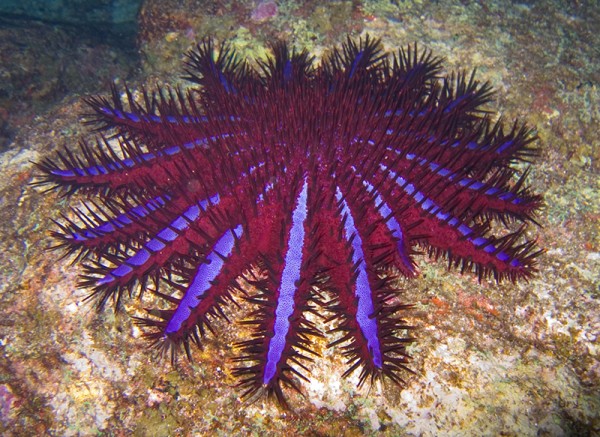A starfish killing robot will now begin its first trial runs where it has the ability to administer lethal injection on an invasive species of crown of thorns starfish across the Great Barrier Reef in Australia.
The autonomous robot is specifically designed to battle starfish that feeds on and destroys corals, damaging up to 40 percent of the reef. Researchers from Queensland University of Technology have developed this COTSbot or crown of thorns robot that possesses highly advanced vision capabilities that can seek and kill these starfish.
The robot will use an extended arm where it will dispense a fatal dosage of bile salts on the spotted starfish where human divers will then collect them and clean up the reefs.
The first field trials were already carried out in Moreton Bay in Brisbane to test the robot's navigation system where researchers reveal that the robots are 99.9 percent accurate.
According to COTsbot designer, Matthew Dunbabin, if the robot shows any hesitation, the robot will then take a photo and transmit it to mission control for additional confirmation. However, there were no crown of thorns starfish spotted during the trials in Moreton Bay as scientists continued to fine tune its navigation system and conduct operations on the Great Barrier Reef.
Dunbabin says that later this month, the robot will now be deployed on the Great Barrier reef to conduct an evaluation of its sophisticated crown of thorns starfish detection system. For the next five months, the team will also increase its autonomous abilities where the robot can eventually autonomously detect and inject the killer starfish.
Not only that, the COTsbot can work underwater for up to eight hours where it can deliver more than 200 lethal shots on numerous starfish found on the reef. The robot will also utilize its two state of the art utilities which are the image recognition system and machine learning system.
The system is also designed and developed to recognize the killer starfish among a myriad array of corals from thousands of still images of the reef, including videos that has been collected by COTS cleaning divers, adds Dunbabin.
Apparently, the growing population of the crown of thorns starfish has produced a strong, negative effect on the movement and distribution of marine nutrients from the land to the ocean where it has been destroying entire regions of reef, according to researchers.
The COTsbot already passed its initial six month trial period in Moreton Bay this week where the next stage will involve navigation testing on strong water currents and even more complex terrain under the ocean. Researchers hope for the robot to fully operate on the reef by early 2016.


